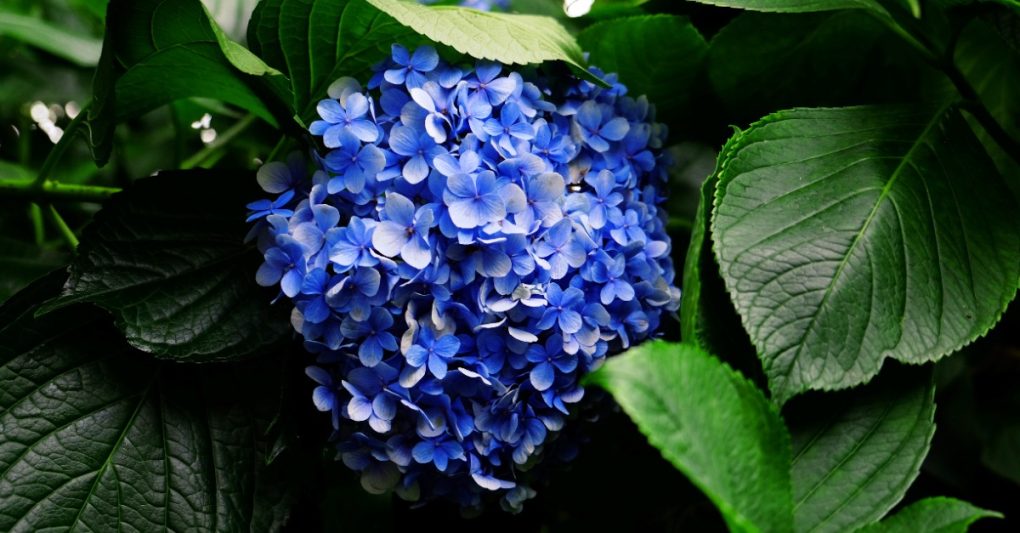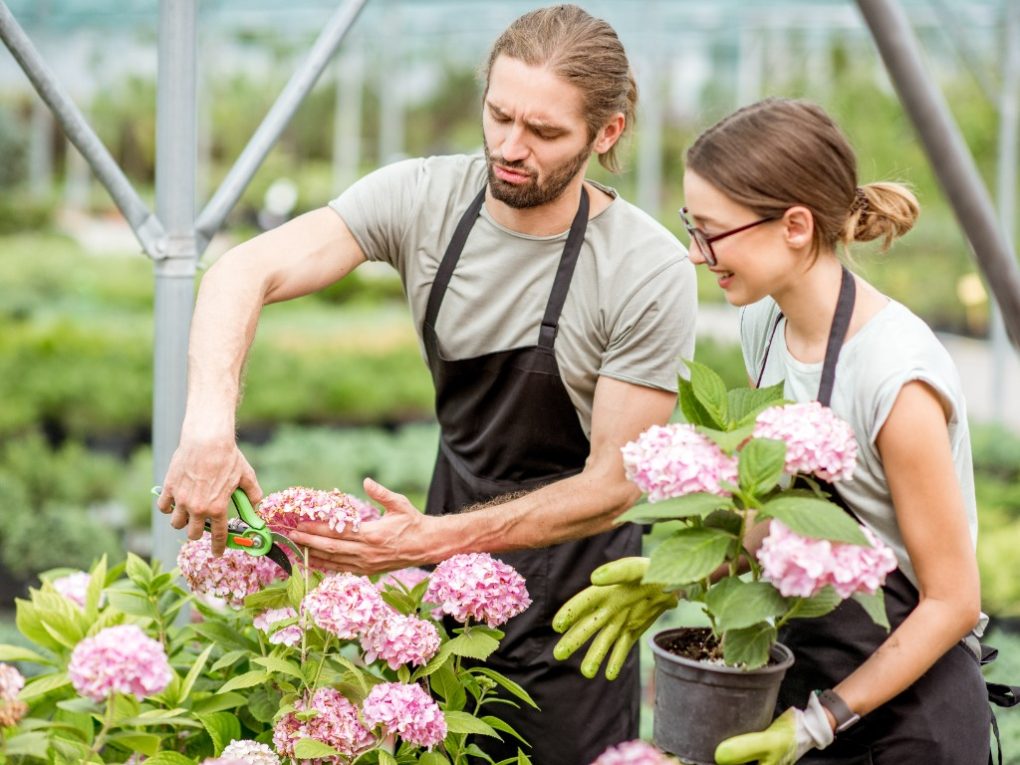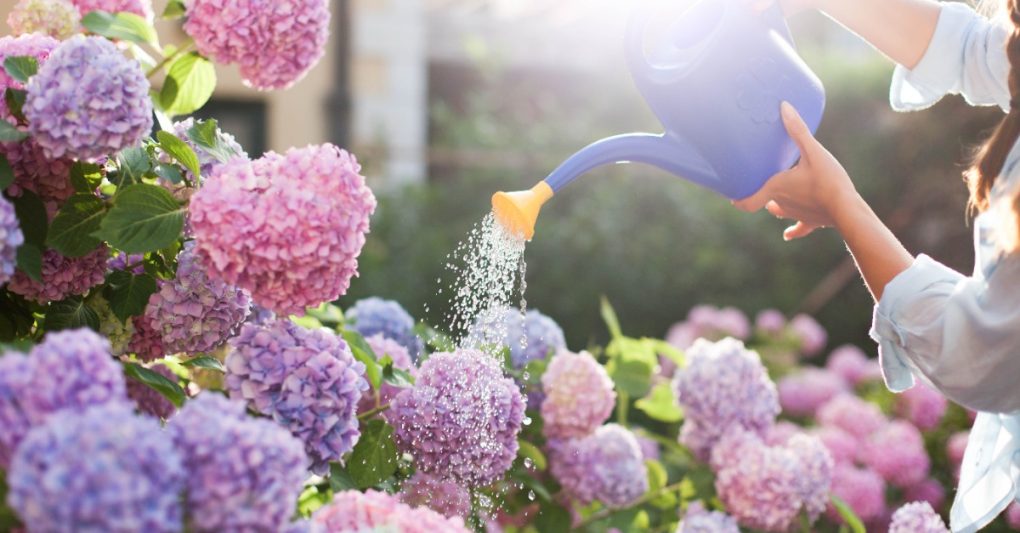How to Regrow Hydrangeas: Tips and Tricks from Plant Addicts
Hydrangeas are a beautiful addition to any garden, adding a pop of color and texture that is hard to beat. If you find that your hydrangeas aren’t growing the way you want them to, whether due to frost damage or simply a desire for more plants, regrowing them is easier than you might think.

Table of Contents
Understanding Hydrangea Regrowth
Hydrangea regrowth can occur naturally or through intentional means such as pruning and propagation. Knowing the different types of hydrangeas and their unique growth habits will guide your regrowth efforts. For example, bigleaf hydrangeas typically bloom on old wood, while panicle hydrangeas bloom on new wood.
Proper care, including watering and fertilizing, is crucial for successful hydrangea regrowth. Timing also plays a role, as different times of the year are optimal for pruning or propagating. Understanding these basics will better equip you to foster healthy and thriving plants.
Overview of Regrowing Hydrangeas
To successfully regrow hydrangeas, you must grasp the basic principles of pruning and caring for the plant. Pruning should be done in late winter or early spring before new growth. It may involve removing dead wood or cutting back branches to encourage fuller growth.
Proper watering and fertilization are also essential for promoting healthy regrowth. Researching your specific hydrangea variety is important to understand its unique requirements. For example, hydrangeas can be propagated from cuttings or by layering, providing additional options for regrowth. You’ll soon have a thriving hydrangea garden following these tips and tricks.
Benefits of Regrowing Hydrangeas
Regrowing hydrangeas offers numerous benefits to gardeners. It is a cost-effective way to add more plants to your garden while maintaining the same color and style of hydrangea you already have.
Regrowing from cuttings ensures that your new plants have the same genetic makeup as the original, resulting in beautiful blooms and foliage. It also allows you to experiment with different planting locations and growing conditions to find the perfect spot for your new plants. With proper care, regrown hydrangeas can thrive in their new environments, providing you and your family with years of enjoyment.

Preparing to Regrow Hydrangeas
Before regrowing hydrangeas, it’s crucial to identify the plant type and understand its specific care requirements. This ensures proper care for thriving hydrangeas. Pruning should be done in late winter or early spring before new growth. Remove dead or damaged wood and thin out crowded branches to encourage new growth and promote regrowth.
Choosing a suitable location for your regrown hydrangea is important. It requires plenty of sunlight and water, so ensure the chosen location provides both. Consider using rooting hormone or propagating through layering to increase success. By taking these steps before starting the regrowth process, you set yourself up for success and give your hydrangea the best chance to thrive.
Tools Needed for Regrowing Hydrangeas
Regrowing hydrangeas require essential tools for success:
● Pruning shears: To cut back the existing plant. Choose the appropriate type for your needs.
● Rooting hormone: Stimulates root growth in new cuttings, available at gardening stores.
● High-quality potting mix: Provides necessary nutrients. Contains a combination of peat moss, vermiculite, and perlite.
● Container or pot: Provides a suitable environment for the plant.
With these tools, regrowing hydrangeas will be a breeze.
When to Take Cuttings for Regrowing Hydrangeas
Timing is critical when taking cuttings for regrowing hydrangeas. Early summer is ideal as the plant is in full growth mode. Select a healthy branch with several nodes or leaves. Use sharp, clean pruning shears to avoid injuring the plant. After removing flowers or buds, leave a few leaves at the top. Place the tip of the cutting into rooting hormone and plant it in well-draining soil. Following these steps ensures the successful regrowth of your hydrangea plant.
Propagating Hydrangea Cuttings
Taking cuttings and propagating them is an easy and effective way to regrow hydrangeas. Follow these steps:
1. Select a healthy stem with at least two sets of leaves.
2. Cut the stem at an angle just below a node.
3. Remove leaves from the lower part of the stem.
4. Dip the end of the stem in the rooting hormone.
5. Plant it in a well-draining soil mix and keep it moist until roots develop.
6. Gradually introduce the new plant to sunlight and outdoor conditions.
Propagating hydrangea cuttings saves money and gives you more control over growth.
Step-by-Step Guide to Propagating Hydrangea Cuttings
Probagating hydrangeas from cuttings is a quick, easy, and cost-effective way to replant and grow new plants. Follow these steps:
1. Select healthy stems free from disease, pests, and damage.
2. Cut the stem at an angle and remove the lower leaves.
3. The cutting should have at least two nodes.
4. Remove all but the top set of leaves.
5. Dip the cutting into rooting hormone powder.
6. Plant it in a well-draining soil mix and keep it moist until roots develop.
Propagation Tips for Successful Hydrangea Regrowth
Growing hydrangeas from cuttings requires patience and care. Follow these tips for successful regrowth:
● Use healthy stems and remove leaves and flowers.
● Apply rooting hormone before planting in the well-draining soil mix.
● Keep the soil moist and provide partial shade until roots develop.
With these propagation tips, you can create beautiful new plants that will bloom for years. Effort and care will reward you with thriving hydrangeas, adding beauty and charm to your garden or home.
Regrowing Hydrangeas from Bent-Over Branches
Regrowing hydrangeas from bent-over branches is a simple and effective method for propagating new plants. Instead of discarding broken or damaged branches, you can use them to grow new hydrangeas.

Step-by-Step Guide to Regrowing Hydrangeas from Bent-Over Branches
Regrowing hydrangeas from bent-over branches is a simple process. Follow these steps:
1. Select a healthy branch and cut it cleanly at a 45-degree angle below the damaged area.
2. Remove any leaves or flowers from the cutting.
3. Dip the cutting in rooting hormone powder.
4. Plant the cutting in a pot filled with moist soil.
5. Cover the pot with a plastic bag to create a greenhouse effect and keep the soil moist until roots form.
6. Once the cutting has rooted, transplant your new hydrangea into a larger pot or garden bed.
With this easy step-by-step guide, you can propagate your hydrangeas effortlessly and enjoy beautiful blooms year after year!
Tips for Successfully Regrowing Hydrangeas from Bent-Over Branches
Regrowing hydrangeas from bent-over branches can be rewarding. Follow these tips for success:
● Ensure the branch is still attached to the plant and has enough leaves for photosynthesis.
● Trim off any damaged parts of the branch to promote new growth.
● Use rooting hormone powder and bury the branch in moist soil to encourage new roots.
● Consistently water and fertilize to support new shoot growth.
● Provide proper care, and your regrown hydrangeas will thrive in their new location.
Hydrangea Water Propagation
Hydrangea water propagation is a simple and effective way to regrow your favorite hydrangea plants without soil.

Step-by-Step Guide to Water Propagation of Hydrangeas
Water propagation of hydrangeas is a cost-effective and easy way to propagate hydrangeas at home. Follow these steps:
1. Select a healthy stem cutting that is around 6 inches long.
2. Remove the leaves from the bottom half of the stem.
3. Place the cutting in a jar of water.
4. Change the water every few days.
5. Within a few weeks, roots will grow from the bottom of the stem.
6. Transplant the cutting into the soil once roots have formed.
7. Care for the plant with proper attention to ensure healthy growth.
Tips for Successful Water Propagation of Hydrangeas
Increase your chances of success with these tips:
● Choose a healthy stem with several leaves and submerge the bottom portion in water.
● Change the water daily to prevent bacterial growth and encourage root development.
● Keep the new plant well-watered and shaded until it becomes established to prevent stress.
● Follow these tips for the best possible results when propagating hydrangeas through water propagation.
Rooting Hormones for Hydrangea Regrowth
Rooting hormones can be a game-changer when it comes to regrowing hydrangeas. They promote healthy root growth and increase the chances of successful regrowth. Consider the options to choose the right hormone for your needs and hydrangea type. Applying rooting hormones to the cuttings before planting them in the soil can make a significant difference. However, remember to be patient and provide the conditions for your newly rooted hydrangeas to thrive. This includes proper watering, sunlight, and nutrient-rich soil. With proper care, your regrown hydrangeas will bloom beautifully in no time.
Understanding Rooting Hormones
Understanding rooting hormones is crucial for promoting healthy root growth and increasing the success rate of hydrangea cuttings. Rooting hormones stimulate root growth in natural or synthetic forms like powder, liquid, or gel. Powder forms are the most common and easiest to use, especially for beginners. Following instructions carefully and avoiding overuse is important, as excessive hormone application can damage the cuttings. With the right application and care, rooting hormones significantly improve the chances of successfully regrowing hydrangeas from cuttings.
Benefits of Rooting Hormones for Hydrangea Regrowth
Using rooting hormones can be a game-changer when it comes to regrowing hydrangeas. These substances, whether natural or synthetic, stimulate root growth in plants. Applying rooting hormone to cuttings before planting them in soil significantly increases the success rate of regrowth. It saves time and money, promotes healthy root development, and stimulates growth in newly propagated hydrangeas. Don’t hesitate to give your regrown hydrangeas the best chance at thriving with the help of rooting hormones.
How to Care for Regrown Hydrangeas
Proper care is crucial for your regrown hydrangeas’ long-term health and beauty. To ensure they thrive, provide sufficient sunlight, water, and nutrients. Pruning the hydrangeas at the right time promotes healthy growth and blooming. Regularly monitor the plants for pests and diseases and take preventive measures. Using propagation techniques like stem cuttings or layering can increase the chances of successful regrowth. With proper care, your regrown hydrangeas will provide years of stunning blooms.
Watering and Fertilization for Regrown Hydrangeas
Maintaining optimal watering and fertilization is essential for the thriving of regrown hydrangeas. Consistent watering is necessary to establish roots, but overwatering can lead to root rot. Considering the climate and soil conditions, keep the soil moist but not waterlogged. Organic fertilizers are preferable, as they release nutrients slowly, benefiting the growth of regrown hydrangeas. Avoid chemical fertilizers that can damage the soil and the delicate root system.

Pests and Diseases to Watch Out for When Regrowing Hydrangeas
Like all plants, regrown hydrangeas are vulnerable to pests and diseases that hinder their growth and health. Keep an eye out for aphids, spider mites, and powdery mildew. Regular monitoring helps prevent damage. Natural remedies like neem oil or insecticidal soap, along with proper pruning techniques and well-drained soil, can be used to control pests and diseases. Minimizing the risk of pests and diseases ensures your regrown hydrangeas’ strong and healthy growth.
Conclusion
Regrowing hydrangeas can be a rewarding experience for any plant lover. With the right tools, knowledge, and care, you can successfully propagate and regrow your hydrangeas from cuttings or bent-over branches. Remember to choose the right time of year for taking cuttings, use rooting hormones for added success, and provide proper care as the new growth develops. Watch for pests and diseases, and fertilize regularly for healthy growth. If you’re ready to try regrowing hydrangeas, follow our tips and tricks for success. Happy planting!
